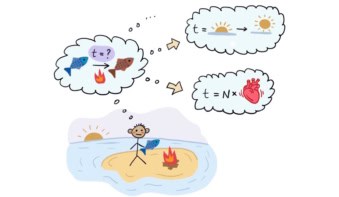Physicists in the US and Russia have demonstrated a new technique for “stopping” light in a gas of atoms. The team claims that the new approach offers greater control over light and may have applications in optical communications, quantum information and experiments with single photons (M Bajcsy et al. 2003 Nature 426 638).
Light travels at a speed of 300 million metres per second in vacuum, but in recent years physicists have managed to slow laser pulses down to speeds of metres per second in atomic gases, and to even stop light completely. Such experiments rely on a process known as electromagnetically induced transparency. However, in these experiments the gas only stores the signature of the laser pulse; it does not contain the actual photons.
Now, Mikhail Lukin and colleagues at Harvard University, the Harvard-Smithsonian Center for Astrophysics and the Lebedev Institute in Moscow have demonstrated a new method that does indeed store the photons at rest in a gas. First, they fire a short “signal” laser pulse into a hot gas of rubidium atoms that is also being illuminated by a strong “control” beam. The signal pulse is slowed down when it enters the gas, and a holographic imprint of the pulse is stored in the rubidium atoms when the control beam is turned off. Such experiments have been performed before, and the pulse is generally recreated by turning on the control laser again.
However, the Harvard-Moscow approach is different because it relies on two control beams travelling in opposite directions. In addition to recreating the signal pulse, the control beams also produce an interference pattern that, in the words of team member Michal Bajcsy, “makes the atoms in the gas behave like tiny mirrors”. The photons in the recreated signal pulse therefore bounce backwards and forwards between these “mirrors”, which means that the overall pulse essentially remains frozen in space. The pulse can be re-released by switching off one of the control beams.
“Earlier experiments on the storage of light stored only the ‘signature’ of the light pulses in a process somewhat similar to creating a hologram,” Bajcsy told PhysicsWeb, “so there were no signal photons present in the medium when the light was being stored. Our experiment, on the other hand, ‘traps’ actual signal photons inside the rubidium vapour in such a way that the overall signal pulse does not travel.”



